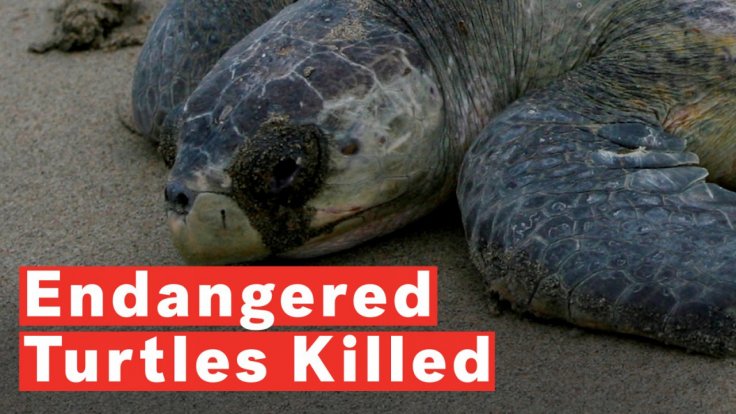
Sea turtles, especially the young ones are highly vulnerable to plastic pollution in ocean, finds a new study. There is a one-in-five chance of death for a turtle that consumed just one item of plastic, and it was found to rise to about 50 percent when the animal has eaten 14 pieces. If a turtle eats 14 pieces of plastic in the ocean, they have a 50 percent chance of dying because of it.
Considering how much plastic is there in the ocean, researchers involved in the study say that their findings raise a serious concern over long term survival of certain turtle species, notes a report by the BBC. There is a never-ending flow of plastic waste into the oceans and it is taking a severe toll on marine life, seemingly innocuous acts like dropping contacts into the toilet will increase plastic pollution in the sea, a recent (not connected) study found.
Documenting the effects of animals caught up in plastic waste and the threats they face as a result is rather straightforward and has been carried out extensively to find out exactly what happens as the effects of consuming plastics are far more drastic, the report points out.
The study has estimated that roughly half of all the sea turtles in the world have consumed some kind of plastic. Among the juvenile, young green sea turtles off the coast of Brazil, this number jumps to about 90 percent, say the authors.
To find out just how plastic exposure was affecting the turtles, researchers have gone through post mortem reports of these creatures in Queensland, Australia. The team also studied animal stranding records, notes the report. From the reports, researchers concluded that if a sea turtle eats more than 200 pieces of plastic, death was an absolute certainty.
With 14 pieces, there is a 50 percent chance of death and just one single piece of plastic, the chance of death was at 22 percent, the study found. Turtles have a kind of digestive tract that doesn't allow them to regurgitate anything, Dr Britta Denise Hardesty from Australia's Commonwealth Scientific and Industrial Research Organisation (CSIRO), said to the BBC.
"If it ends up in the wrong place," she said, "even one little thin, filmy piece of plastic can block that canal and nothing can pass (it) and ultimately the blockage can result in death."
Apart from blocking bodily processes, harder pieces of plastic are known to cause internal injuries and these could also lead to death, she said.
Researchers also found that the juveniles were eating far more plastic chunks than adults. When compared to adults, about 23 percent of the juveniles and 54 percent of hatchlings had eaten plastic, when compared to 16 percent adults. This greater vulnerability depends on where these animals live and that their feeding habits also plays a role.
"We think that small turtles are less selective in what they eat than large adults who eat sea grass and crustaceans, the young turtles are out in the oceanic area offshore and the older animals are feeding in closer to shore," explained Hardesty.









